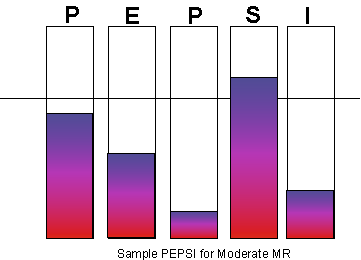| ESE504 : The Class : PEPSI : Ideas for the IEP | |||||
Using the PEPSI
to identify Student Strengths and Growth Needs
Once a PEPSI profile is established, there is a graphic representation of a student's strengths and weaknesses. Use the following example of a seven year old youngster to practice looking for student strengths and areas that might be important to focus on as part of an individual education plan.
|
Area
|
Strengths
|
Build-ons
|
| Physical |
|
|
| Emotional |
|
|
| Philosophical |
|
|
| Social |
|
|
| Intellectual |
|
|
Now, write two objectives for each of the PEPSI areas. Stay focused on strengthening the student's potential. Try to address one of the objectives toward strengths the student already has.
Physical
1.
2.
![]()
Emotional
1.
2.
![]()
Philosophical
1.
2.
![]()
Social
1.
2.
![]()
Intellectual
1.
2.
You should now send an email to the instructor, sharing two of the strongest IEP objectives.
 E-mail J'Anne
Ellsworth at Janne.Ellsworth@nau.edu
E-mail J'Anne
Ellsworth at Janne.Ellsworth@nau.edu
PEPSI developed by J'Anne
Ellsworth
![]()
Copyright 1999 Northern Arizona University
ALL RIGHTS RESERVED

